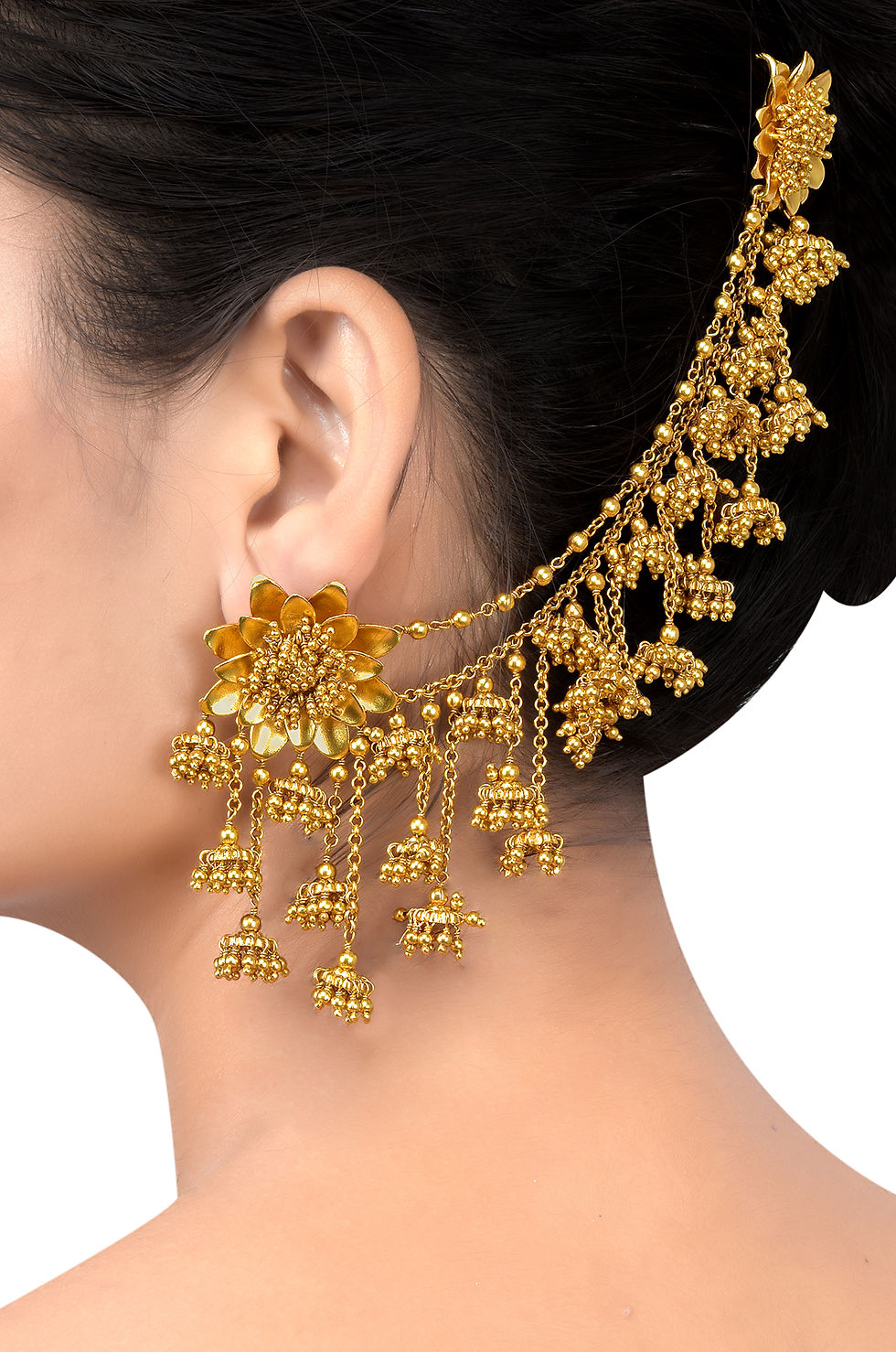Beyond Adornments: The Cultural Tapestry of Indian Jewellery
- advika
- Jan 19, 2024
- 3 min read
Introduction:
In the kaleidoscope of India's cultural heritage, jewellery emerges as an art form that transcends its ornamental function. Indian jewellery, with its diverse styles, intricate craftsmanship, and profound symbolism, is a living testament to the country's rich history and vibrant traditions. This article delves into the cultural tapestry woven by Indian jewellery, exploring its historical roots, symbolic significance, and its enduring role in everyday life. Know more in detail Traditional Necklace

Historical Roots: Echoes from Ancient Civilizations
The roots of Indian jewellery extend deep into the annals of history, echoing the splendors of ancient civilizations. Archaeological finds from the Indus Valley Civilization reveal the presence of intricate ornaments crafted from various metals and gemstones. Over the millennia, the art of jewellery-making evolved through interactions with different cultures, resulting in the diverse array of styles and techniques witnessed today.
Symbolism and Rituals: Adornments with Purpose
Indian jewellery is not just about embellishment; it is laden with symbolism and serves ritualistic purposes. The 'Mangalsutra,' a sacred necklace worn by married women, symbolizes marital bonds and well-being. The 'Nath,' a nose ring, carries cultural significance and is often worn during weddings. These adornments become visual expressions of cultural values, beliefs, and milestones in an individual's life.
Diverse Styles: Regional Flavors and Craftsmanship
The cultural diversity of India is mirrored in the multitude of jewellery styles that vary from region to region. The regal 'Polki' and 'Kundan' jewellery from Rajasthan showcase the mastery of setting uncut diamonds in gold. The intricate filigree work of Odisha and the temple jewellery of the South, inspired by temple architecture, exemplify the distinct craftsmanship rooted in regional traditions.
Materials and Gemstones: Earth's Bounty Adorning Lives
Indian jewellery incorporates a plethora of materials, each chosen for its beauty and cultural significance. Gold, considered an auspicious metal, is a staple in traditional designs. Precious gemstones like rubies, emeralds, and sapphires add vibrant colors, while pearls symbolize purity and are often incorporated into necklaces and earrings. The use of natural materials connects wearers to the earth's bounty.
Craftsmanship: An Art Passed Through Generations
The craftsmanship of Indian jewellery is an art passed down through generations, with techniques honed over centuries. 'Meenakari' involves enameling metal surfaces with vibrant colors. 'Jadau' is the intricate art of embedding uncut diamonds and gemstones. Each technique is a testament to the dedication of artisans who preserve the cultural heritage through their meticulous craftsmanship.
Festivals and Celebrations: Jewels in Cultural Celebrations
Indian jewellery takes center stage during festivals and celebratory occasions. Weddings, in particular, witness an array of opulent adornments. 'Maang Tikka,' 'Bangles,' and 'Payal' become integral parts of bridal ensembles, symbolizing prosperity and marital bliss. Festivals like Diwali see a surge in gold purchases, as it is considered auspicious to buy gold during this time.
Modern Influences: Evolving Traditions in Contemporary Designs
While deeply rooted in tradition, Indian jewellery has gracefully evolved to incorporate modern influences. Contemporary designs seamlessly blend traditional aesthetics with modern sensibilities. Designers experiment with unconventional materials, geometric patterns, and minimalist styles, catering to the evolving tastes of a global audience without compromising the essence of cultural traditions.
Jewellery as Heirlooms: Passing Down Cultural Treasures
Indian jewellery often serves as more than just accessories; they are treasured heirlooms passed down through generations. These pieces carry not only aesthetic value but also the stories of ancestors and the cultural legacy of a family. The act of passing down jewellery becomes a ritual that preserves and perpetuates the cultural heritage embedded in these adornments.
Socio-Economic Impact: Beyond Beauty to Livelihoods
The craft of jewellery-making has a profound socio-economic impact in India. Artisans, often working in small family-owned businesses, contribute significantly to the country's economy. The sector provides livelihoods to a vast number of skilled craftsmen, ensuring the preservation of traditional skills and craftsmanship.

Global Appreciation: Indian Jewellery on the World Stage
Indian jewellery has garnered international acclaim, finding its place on the global stage. Designers showcase their creations at international fashion weeks, and celebrities worldwide adorn Indian jewellery at red-carpet events. The global appreciation for Indian jewellery underscores its universal appeal and timeless beauty. Know more in detail Tribal Jewellery
Conclusion:
Indian jewellery is more than an ensemble of precious metals and gemstones; it is a cultural tapestry that weaves together traditions, stories, and artistry. As it continues to evolve, adapting to modern tastes and global influences, Indian jewellery remains a vibrant and integral part of the country's cultural identity, resonating with beauty that transcends time and trends.




Comments